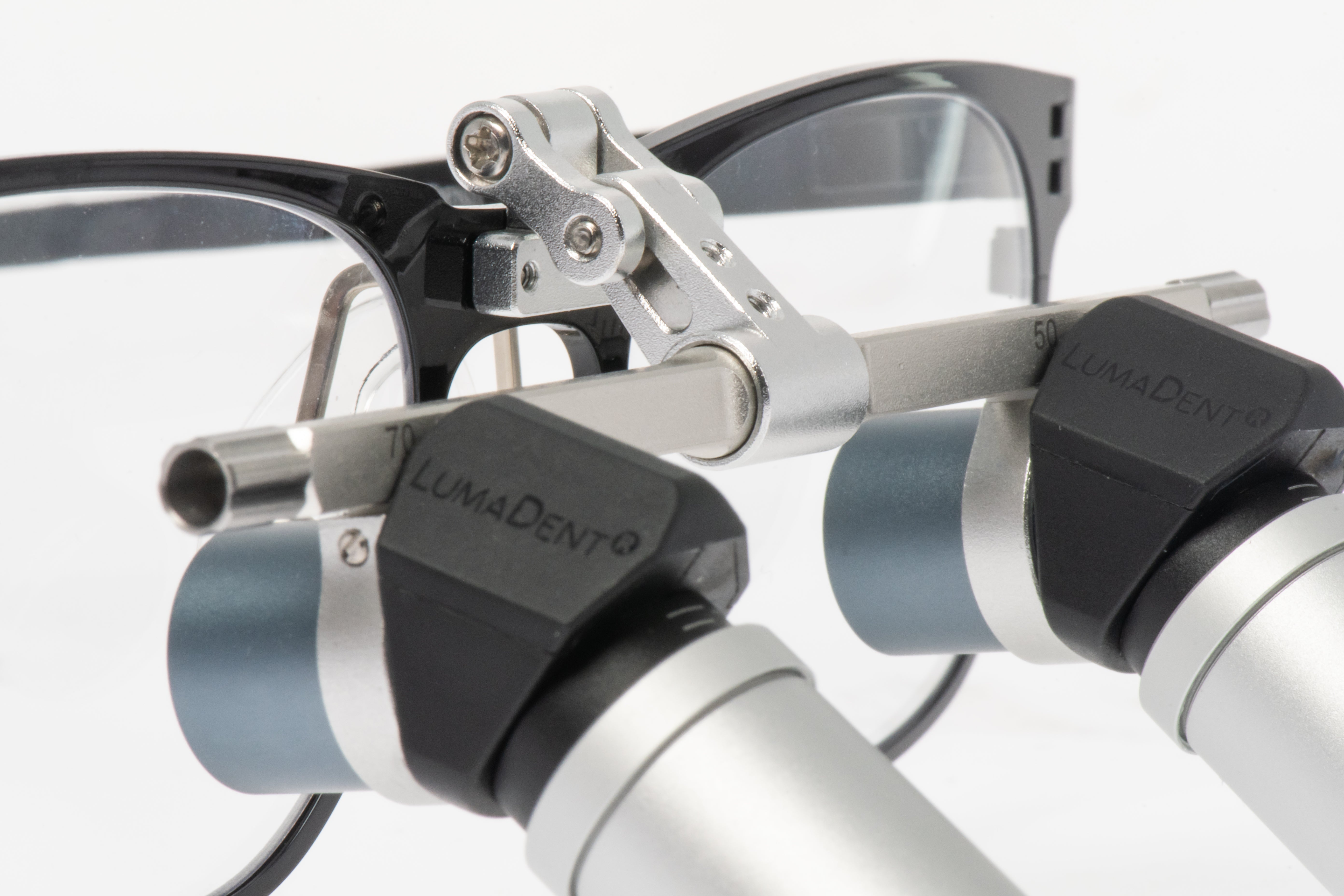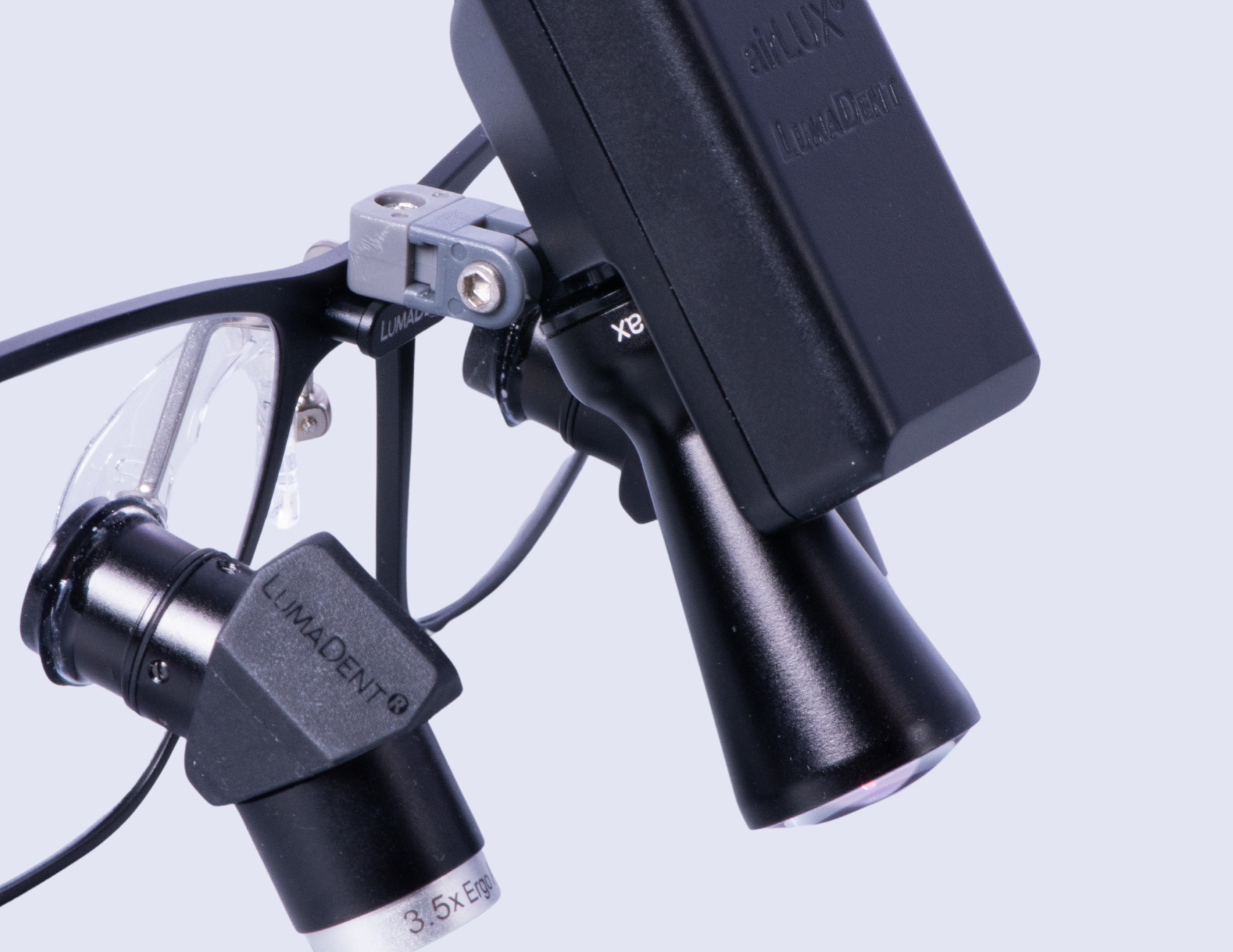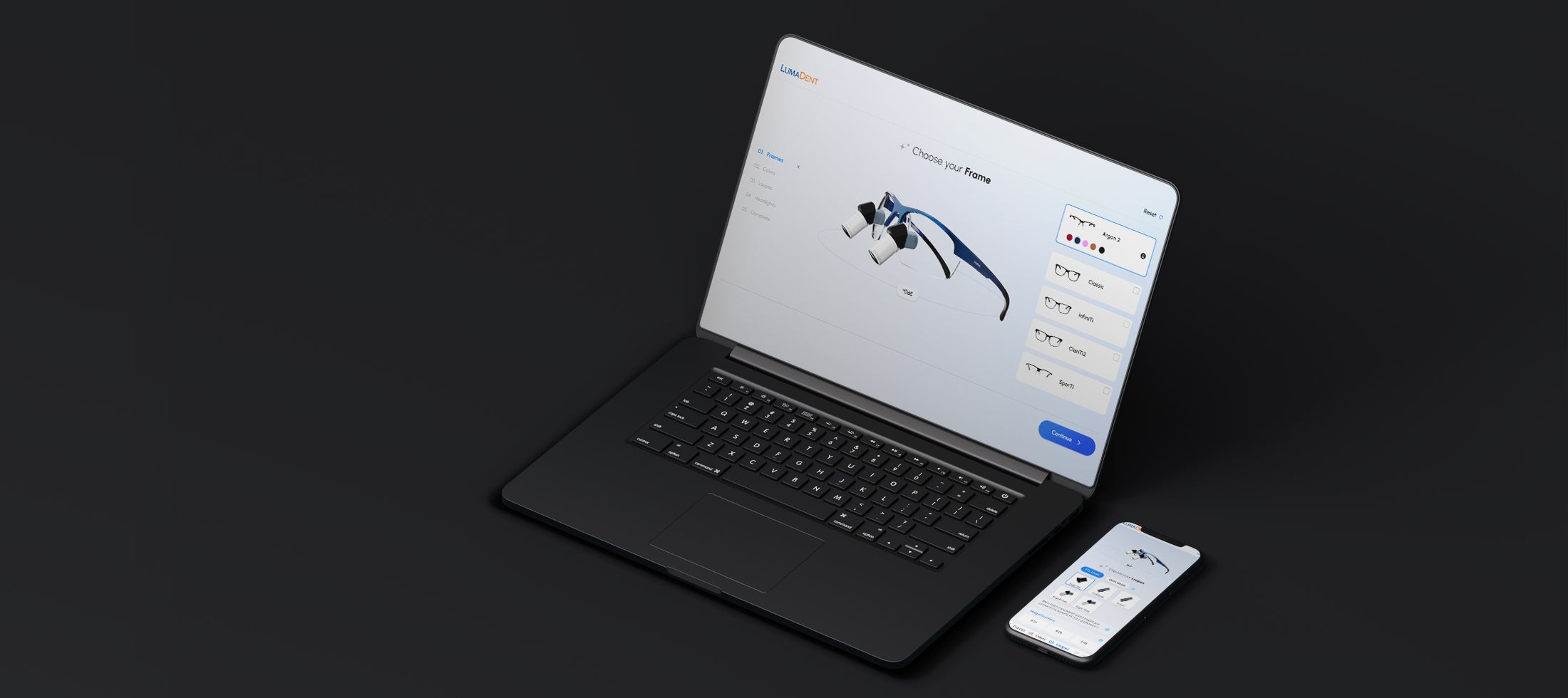If you haven't started using ergonomic loupes yet, you're in the right place! Loupes can significantly boost your precision and comfort during dental procedures, though they come with a learning curve. Integrating them into your routine takes consistency and practice. The adjustment period can be tricky, but the long-term benefits—reduced physical strain, better posture, and increased accuracy—are well worth it. This article is packed with tips and tricks to help you as you are getting used to ergonomic loupes, from building muscle memory to using loupes in everyday tasks. Whether you're experienced or just starting out, these insights will help you work more efficiently, comfortably, and, most importantly, ergonomically.
The First Steps to Getting Used to Ergonomic Loupes
The first step to getting used to ergonomic loupes is to wear them doing your hobbies and daily activities. After about 2 weeks of practice, you are sure to become a pro. Some hobbies and activities you could start practicing with your loupes include painting, coloring, drawing, knitting, embroidery, crocheting, sewing, cross-stitching, jigsaw puzzles, writing in a journal, texting on your phone, and painting your nails.
Painting, Coloring, Drawing:
Activities like painting, coloring, and drawing are perfect for getting the hang of the magnification and focus your loupes provide. It is also important to make a conscious effort to use your peripheral vision when switching between colored pencils or brushes. This practice helps simulate the experience of switching instruments during dental procedures
Writing in Journal:
Writing in a journal is another great way to get comfortable with your loupes. Whether you're jotting down thoughts or crafting a story, this activity helps you maintain focus and develop a natural rhythm with your new visual perspective.
Crafting:
For those who enjoy crafting, hobbies like knitting, embroidery, cross-stitching, and crocheting are fantastic to try with your loupes. These activities require precise hand movements and sustained focus, much like the skills you'll use during dental procedures. Plus, they’re enjoyable and can be very relaxing.
Texting on Your Phone:
Texting on your phone is something most of us do daily. Try wearing your loupes while you text to get used to using them in a familiar setting. This will help improve your fine motor skills and make the transition to using loupes at work smoother.
Puzzles:
If you enjoy puzzles, working on a jigsaw puzzle while wearing your loupes is a fantastic way to practice. It helps you get used to the magnification and develop your skills with peripheral vision as you reach for pieces to assemble the puzzle.
Painting Your Nails:
Painting your nails is a simple yet effective way to practice using your loupes. This activity requires steady hands and careful movements, just like many tasks you'll perform in your dental practice.
Using your loupes while enjoying hobbies you already love is a great start to understanding your new loupes. By performing intricate tasks with improved accuracy during these activities, you'll develop the muscle memory needed for professional use. This hands-on experience ensures that you can perform dental procedures with greater confidence and precision.

Building Muscle Memory is the Key
The process of building muscle memory involves training your body to perform tasks automatically, without conscious effort, making your movements more efficient and precise. Engaging in activities that require fine motor skills and attention to detail can be particularly beneficial. As mentioned before, activities such as coloring, painting, or writing in a notebook help you become accustomed to maintaining focus through magnification and using your peripheral vision to switch between different tools, like colored pencils or brushes. Just make sure to do these tasks at your measured working distance, typically 20 inches to avoid picking up bad habits. These tasks require attention to detail and can help you practice maintaining a steady hand while working with enhanced vision.
Most people adjust to their loupes within the first 2-4 weeks. Here’s a suggested timeline to help you get started:
-
First Few Days:
- Text on your phone
- Paint your nails
- Write in a journal
-
One Week:
- Practice with a typodont and dentistry tools
- Work on more intricate tasks like jigsaw puzzles, embroidery, or sewing
-
Two Weeks to a Month:
- Use loupes with patients for simple procedures like fillings, enamel etching, caries excavation, or bond application
- Progress to more complex procedures once you have full confidence with loupes
Consistently practicing these activities with your loupes will help train your brain and muscles to adapt to the new visual perspective and magnification, making the transition to professional use much smoother. Over time, these exercises will help you build the muscle memory needed to perform dental tasks with greater ease and accuracy, ultimately enhancing your overall proficiency and patient care quality.
Beginning to Use Ergonomic Loupes at Work
When you first are getting used to ergonomic loupes, it’s important to ease into them for a smooth transition. Start by practicing with a typodont and tools to get a feel for your new loupes in a controlled setting. This helps you get comfortable with the equipment. Once you’re used to that, move on to simple procedures you’re confident with to learn how to effectively use the loupes in a real clinical environment.

Be patient with the adjustment process, as it can take anywhere from two weeks to a month to become fully comfortable with your loupes. During this time, don't hesitate to inform your patients that treatments might take a bit longer as you get accustomed to the new equipment. This transparency helps manage expectations and allows you to build confidence.
To maximize your adaptation, here are some practical tips:
- Start with Short Sessions: Wear your loupes for 15-20 minutes during simple procedures and then take a break. Gradually extend the wearing time as you become more comfortable.
- Practice Good Posture: One of the main benefits of ergonomic loupes is their ability to promote better posture. Keep your back straight, shoulders relaxed, and feet flat on the floor. Avoid leaning or hunching over the patient, and strive to maintain a neutral spine position. Watch your arms and steer clear of the “chicken wing” position.
- Use Proper Lighting: Ensure your operatory is well-lit. Proper lighting is essential when learning to get used to ergonomic loupes. Consider using additional light sources, such as a headlamp or operatory light, to enhance visibility and reduce eye strain, thereby improving the clarity of your work.

By following these steps, you'll gradually build the muscle memory needed for more complex procedures, ensuring you can perform dental tasks with greater confidence and precision.
Common Mistakes Beginners Make
When getting used to ergonomic loupes, there are a few common mistakes to watch out for. One big one is adjusting yourself to bring the loupes into focus instead of shifting the patient. It's better to adjust the patient's position in the chair to bring your loupes into focus and maintain proper posture, helping to avoid neck and back strain. Another common mistake is neglecting to take breaks. Wearing loupes for too long without a break can make you feel uncomfortable and tired, so be sure to rest your eyes and body every now and then. Also, don’t forget to set up your workspace ergonomically—adjust your chair and equipment so you can work comfortably and efficiently. Pay attention to any signs of discomfort and make changes as needed to avoid long-term issues. By keeping these tips in mind, you’ll have a much better experience using your loupes.
Moving Forward with Confidence
Getting used to ergonomic loupes can significantly boost your precision, comfort, and efficiency during dental procedures. With patience and consistent practice, you'll develop the skills and confidence to handle complex tasks with greater accuracy and less strain. Follow the timeline and steps in this article, and you'll master working with your ergonomic loupes in no time.
Take The Next Step

Getting used to ergonomic loupes doesn't have to be difficult. Take the next step towards enhancing your dental practice by integrating our loupes into your daily routine. Start with simple tasks and gradually build your muscle memory to ensure a smooth transition. Don't hesitate to seek advice from experienced colleagues and invest in proper training. At LumaDent, we are committed to providing innovative ergonomic solutions that support your health and success. Explore our range of ergonomic loupes and discover how they can transform your practice, improve your patient outcomes, and elevate your professional capabilities.
Visit our Designer Studio to customize your loupes and take your practice to the next level.
https://design.lumadent.com/




Share:
CDA Anaheim 2024 Recap
Vote LumaDent Townie Awards 2024